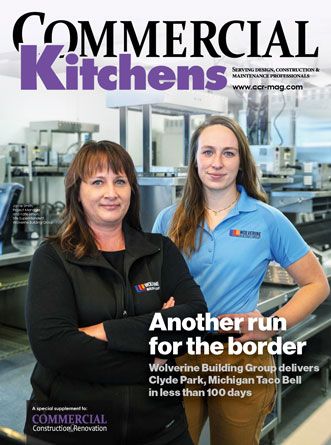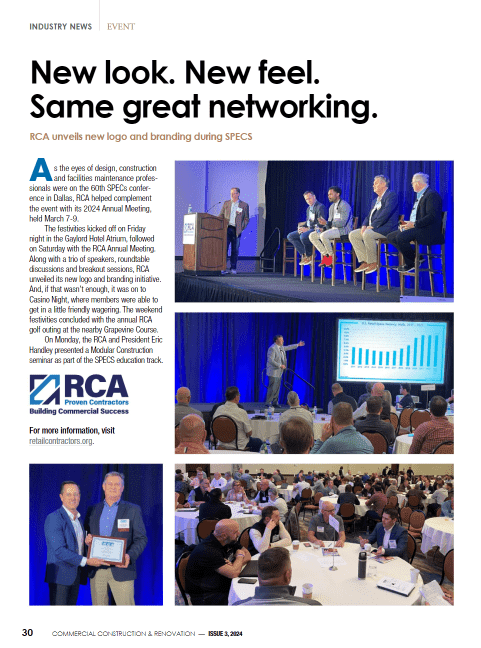With real estate being one of its top expenses, many companies are seeking ways to maximize their office’s square footage and leave less underutilized space. Of course, in 2020, these goals must be accomplished in a way that also considers new regulations and policies, like social distancing.
Optimizing space on individual floors or throughout an entire building may mean exceeding the architectural specifications on record. One way of addressing that is by installing a fire alarm system that allows for faster, earlier egress from the building or tenant floor in the event of a fire. To achieve that, fire protection engineers are often called upon to re-evaluate and potentially redesign the fire and life safety systems to meet NFPA 72 code requirements.
To re-evaluate the design, fire protection engineers must submit performance-based design proposals to help ensure occupants can safely exit the building within an acceptable timeframe. As an International Code Council (ICC) accepted alternative, performance-based designs allow engineers to apply “alternate materials and methods” that offer equivalent or superior fire safety performance.
“Life safety codes are designed to ensure everyone in the building can exit safely if a fire occurs,” says Bill Van Loan, President of Critical Systems, LLC, a Marietta, Ga.-based full-service fire alarm life safety and building security company owned by ADT Commercial. “If there are more people that have to exit the same sized doors and stairwells on the floor, then typically that requires even more advanced detection systems that can identify the exact location of the fire.”
As a low voltage systems integrator, Critical Systems handles life safety and security needs of commercial properties including fire alarms, emergency responder radio communications systems (ERRCS’s), fire suppression, access control and security systems.
According to Van Loan, the amount of time the performance-based design approach allows for egress ultimately dictates retrofit requirements. While it is possible to install traditional addressable wired or wireless spot smoke detectors, it is now also possible to use addressable aspirating smoke detectors that also allow firefighters to pinpoint the exact location of the fire.
Recently, Critical Systems completed a project involving four floors of a high-rise commercial building in Georgia. As part of the performance-based design to allow the tenant to increase occupancy beyond the architectural specifications, advanced aspirating smoke detection technology was specified for the project. For this, Van Loan says the company used eight VESDA VEA fire alarm system units manufactured by Xtralis, a global provider of very early detection solutions
“Building owners want early warning detection to help save lives, protect assets, and avoid extensive business downtime in case of fire. With early detection you can potentially put out the fire with an extinguisher before it escalates, and first responders will have an early start on the blaze if necessary,” says Van Loan.
Aspirating technology was first introduced in the early 1980s. The latest VEA model consists of small, unobtrusive sample points that can identify smoke in each room. The air is analyzed using sophisticated laser-based technology at the central unit located within 300 feet.
As a multi-channel, addressable system, the central unit can pinpoint the exact location of the alarm up to 40 sample points and the central units can be extended to meet any size project.
The system has different sensitivity settings to suit a range of applications.
“We have used other products but lately are focusing on the VEA because of its unique capabilities with addressable point identification using individual tubes in detection ports. It makes it easy to get a better point ID location versus putting in a hard pipe system which tells us nothing about location,” says Van Loan. “We want to drill down to that level of detection. The system allows us to pinpoint addressability all the way back to the main building fire alarm panel.”
He notes how important such location information is when a fire occurs. “With a sprinkler system, you have no clue where the fire is on the floor so you have to take your chances and investigate what is going on, at which point the fire can grow out of control,” he says.
“False alarms are a concern for traditional spot detectors, which can be set off by dust or dirt. A false alarm can be disruptive and expensive if you have to evacuate a high rise building with different tenants,” says Van Loan.
The VESDA VEA clears the tubes of blockages or dust with a puff of air, creating a low probability of false alarms. Every seven days, the system will do a sample port test. On every third sample port test, it cleans, thus providing constant system monitoring.
Mandated annual National Fire Protection Association (NFPA) inspections are also simplified. As the VEA unit has a centralized detector and full integrity monitoring of the sampling tubes, annual smoke testing is conducted at the central unit, saving time and allowing smoke testing to be conducted without interrupting the protected area.
“The aspirating smoke system is easy to test. In a commercial building, you might have 100 conventional addressable, analog smoke detectors that you would have to test individually every year. That’s a lot of work and can require entry into hard to reach, access-controlled areas,” says Van Loan. “With the VEA, you can test from the central unit [which is usually placed in mechanical or electrical rooms] so you don’t need special access, and the test can be done in 15 minutes.”
For commercial properties that value aesthetics, the VEA sampling points are about the size of a quarter, making them inconspicuous to facility occupants and visitors.
“We generally use black, white, or stainless-steel sampling points. They blend in with the environment and are architecturally pleasing,” says Van Loan.
With the four floors of the commercial building in Georgia successfully completed, Van Loan says that plans are underway to outfit another floor with the aspirating technology. When finished, this will account for about 27% of the building’s total capacity.
Van Loan expects to install more aspirating technology systems in the future.
“We have been contacted to work on 10 to 12 of these types of projects in the last year, including one at a major university,” says Van Loan. “The aspirating technology is an ideal solution in these situations because it provides much earlier warning and is easier to install and maintain over time than traditional spot smoke detection systems.
For more information, contact: Xtralis at 12 Clintonville Road, Northford, CT 06472; call: +1 800-229-4434, email: sales@xtralis.com; or visit: www.xtralis.com/vea
#xtralis









 The 2024 virtual Men’s Round Table will be held Q4, 2024, date TBD.
The 2024 virtual Men’s Round Table will be held Q4, 2024, date TBD.











